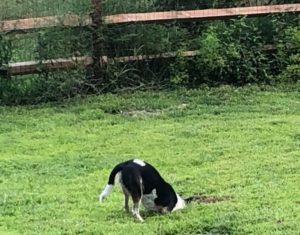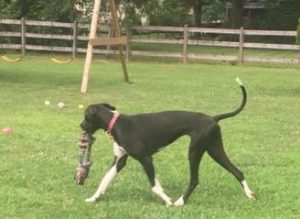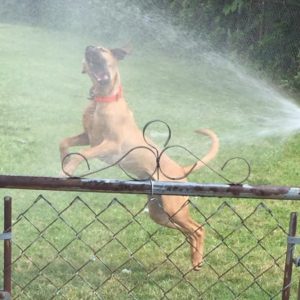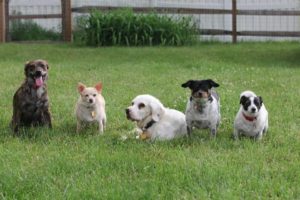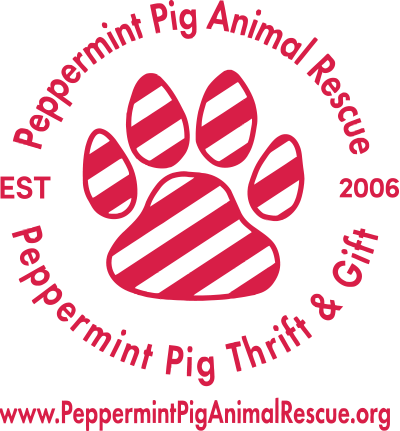Fenced Yard Requirements
Fenced Yard Descriptions, Policies and Requirements:
Completely Fenced Yard: A portion of your yard, typically the back yard, is completely enclosed with a secure fence where a dog can have safe, supervised off leash play time and potty breaks. The fence should be connected to the house for easy access. For dogs who have a fenced yard requirement, the fence must be installed prior to adoption.
**An enclosed deck, balcony, patio and/or pool area, community dog parks and/or shared/common areas, dog runs, outdoor kennels, electric livestock fence and/or fenced areas that are shared with livestock or attached to outdoor building or barn as their main access to fenced area do not qualify as a fenced yard.
Partially Fenced Yard: A portion of your yard, typically the back yard, has some fencing but is not completely enclosed. For pets who require a fenced yard, the fence must be fully enclosed.
No Fence: There is no fence enclosing, or partially enclosing, any portion of your yard.
Invisible Fence: Sometimes called “electric, underground or hidden fence,” invisible fence must be installed and in use prior to adoption. Other requirements may apply depending on the dog you’re interested in and your experience with invisible fence.
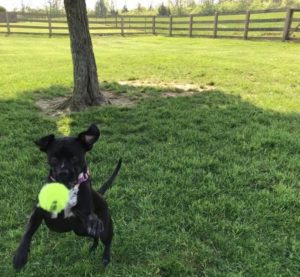 Why we require a fence:
Why we require a fence:
A fenced in yard is incredibly important when it comes to adopting a dog. They are active creatures that need a safe space to run and play. Dogs cannot be cooped up all day but they can’t be trusted to run loose all over the neighborhood either. A fenced yard helps to ensure that they have a place to have supervised play and exercise time where they won’t be in danger. It’s a harsh, but necessary, requirement for a lot of rescue organizations. We require a fenced yard for all puppies and for most of our adult dogs. If a fence isn’t possible, we strongly encourage adopters to seek other rescues or shelters who do not have a fenced yard requirement, or to select a dog who does not have this requirement listed in their bio. If you are planning to have a fence installed, please have this completed before submitting your application.
All of our rescue dogs reside in loving foster homes until they are adopted, where we get to know each of their individual needs and personalities. Some dogs are runners and some dogs have a lot of energy where leash walks alone may not be sufficient, and they need a place to play and run off leash in a safe environment. Each dog has different needs, and when we specify a fenced yard for one of our dogs, it is because this is the type of environment they will do best with.
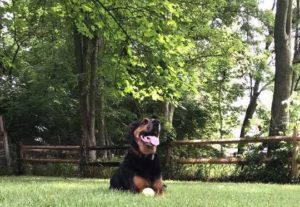 Our fenced in yard policies are also often in place to prevent dogs from being left tied out or chained up. We realize this doesn’t eliminate the chance that someone with a fenced yard will leave them outside in it for long periods, but that is where our rigorous application process comes into play. We evaluate each applicant thoroughly to determine if their lifestyle and home activities are suited to fit the needs of the dog they are interested in adopting. The fenced yard is only a minimum requirement and does not automatically mean a person is approved to adopt. Our adoption process has many requirements that every applicant must meet to be approved for adoption.
Our fenced in yard policies are also often in place to prevent dogs from being left tied out or chained up. We realize this doesn’t eliminate the chance that someone with a fenced yard will leave them outside in it for long periods, but that is where our rigorous application process comes into play. We evaluate each applicant thoroughly to determine if their lifestyle and home activities are suited to fit the needs of the dog they are interested in adopting. The fenced yard is only a minimum requirement and does not automatically mean a person is approved to adopt. Our adoption process has many requirements that every applicant must meet to be approved for adoption.
We know that people intend to walk their dogs, and we expect them to, even with a fenced yard. However, we also know that situations come up where people are unable to walk their dogs; i.e. weather, illness, injury, schedule changes, children’s after school activities, etc. Dogs often become destructive in the home from lack of exercise, or begin to potty in the house because they haven’t been walked, which increases their risk of being returned, and in fact, is one of the main reasons so many dogs are surrendered to shelters or abandoned. We are lowering this risk by requiring a fenced yard, where they are able to have a safe place to burn some energy and/or potty when walks are not an option. There have been few cases where we have made an exception to this requirement for an adult dog, but this does not happen often and it depends on the dog’s needs and the adopter’s ability to successfully accommodate the dog’s needs. A well-socialized, leash-trained adult, or senior, dog might do well in a condo/townhouse or apartment environment, where all outside activities take place on a leash. We will evaluate any potential exceptions on a case by case basis. There are no exceptions to our fence policy for puppies.
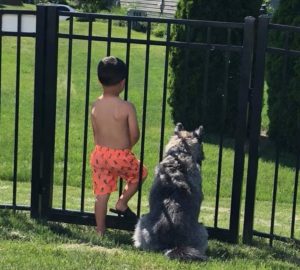
“What if I train them to stay in the yard?”
We are often asked if we will make an exception if you train your dog to stay in the yard. Unfortunately, we see dogs in kill shelters all the time that have been “trained” to stay in the yard. This is just not a safe way to contain a dog. We have seen too many dogs who have been hit by cars for this as well. No matter how much property/acreage you own, or how far out in the country you are, a dog will walk into a road at some point and we are not willing to take this risk with the dogs we rescue. We are aware that having a fenced yard does not completely eliminate this risk, but it is definitely safer than not having a fence for them to play in.
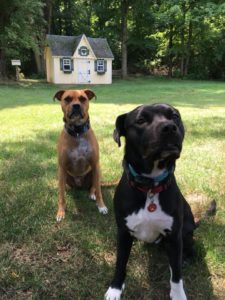
“What if we have/will have invisible fence?”
Many potential adopters have, or will have, an invisible fence. There is not a direct “yes or no” answer to whether or not an invisible fence will be acceptable or approved for adoption. The only way to determine if your invisible fence would be a good fit for the dog you want to adopt is if you complete the adoption application so we are able to assess it in its entirety. There is a section in our application where you can tell us about your invisible fence. This will be taken into consideration along with the rest of the application and listed requirements for the dog you are applying for. Each dog is different, and some may not do well with an invisible fence, where others may learn quickly and be fine contained in one. We encourage you to submit a Contact Us form to inquire as to whether or not a specific dog may be a good candidate for invisible fence.
The potential adopter’s experience with invisible fence is taken into consideration and evaluated on a case by case basis. In every case, the invisible fence must be installed and in use prior to adoption. We typically will not approve invisible fence for small breed puppies or dogs under 20 pounds.
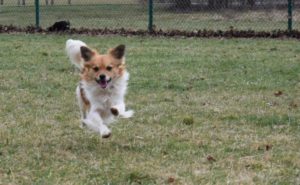
In Closing:
We hope this clears up any questions that may arise regarding our fenced in yard requirements. We wish you the best of luck in your search for your new furry family member, whether you adopt them from us, or from another rescue or shelter 🙂
We know there there are some pretty strong and/or negative opinions regarding our fenced yard requirements. While it disheartens us to hear such negativity, this is our – Peppermint Pig Animal Rescue’s – policy, and if you do not agree, we respect your opinion and encourage you to rescue from a shelter, or seek other rescues to adopt your next furry family member from who do not have this requirement. There are thousands of animals in need all over the US where you have the opportunity to save a life regardless of whether or not your yard is fenced.
We would like to be clear that our policies and procedures are always put in place with our rescue dogs as our first, and foremost, priority. Based on over 15 years of successful, and failed adoptions, working closely with shelters, trainers, and the public, we have gained some very good experience in determining what the dogs we rescue need.
The work we do at PPAR has been well thought out and developed through trial and error, sweat and tears, and reflection and growth as a group. While we believe in respectful disagreement, we do not apologize for our guidelines, protocols, and procedures. Peppermint Pig Animal Rescue is rooted in our mission to make a difference for the animals, save lives, and build happy loving homes with a rescue pet in them. Everything we do is based on our mission and we can solidly stand behind that.
